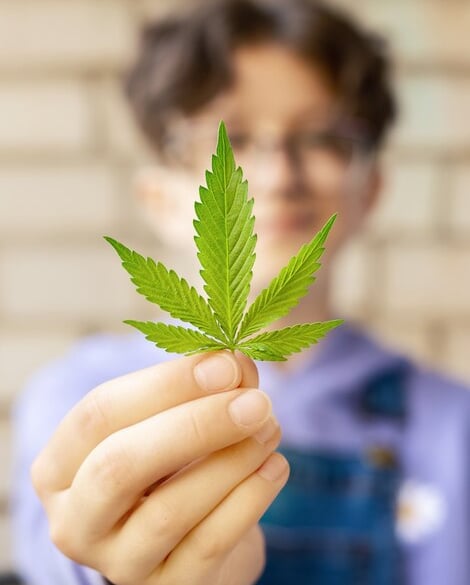Risks of Marijuana Consumption in Children
Marijuana use in the school population is a problem that requires attention and action from parents and caregivers. Talking to children about the associated risks, increasing risk perception and strengthening parental control are essential strategies to prevent early use of this drug. Only through education and open communication can we protect our children and help them make healthy decisions.
Kids UP
1/23/20242 min read


Marijuana has become one of the illicit drugs most consumed by the school population in Chile. According to recent studies, 1 in 5 children in Chile in high school (ENPE 2021) has consumed this drug, which is an alarming figure and one of the highest in Latin America. The different varieties of marijuana, especially those with high levels of THC, one of its addictive components, increase levels of dependence and represent a potent risk for the development of addictions and problematic use. In adolescents the brain is actively strengthening and will continue to develop until approximately 25 years of age. Using marijuana during adolescence and early adulthood can harm the developing brain.
The negative effects of marijuana use in teenagers include:
Difficulty thinking and solving problems
Problems with memory and learning
Reduced coordination
Difficulty maintaining attention
Problems with school and social life
Marijuana use at an early age can have serious consequences on the cognitive and emotional development of children, including synaptic pruning, a crucial process for brain development, which can result in learning difficulties, memory problems and affect the ability to make appropriate decisions.
As parents and caregivers, it is essential to talk to children about the risks associated with marijuana use and take steps to prevent early use. Below are some strategies to increase risk perception and strengthen parental control:
1. Educate about the effects and risks
It is important that parents and caregivers inform themselves about the effects and risks of marijuana use in order to transmit this information clearly and accurately to children. Explaining to them how this drug can affect their development and long-term health can help raise awareness about the associated dangers.
2. Establish open communication
Creating an environment of trust and openness at home is essential for children to feel comfortable talking about any topic, including drugs. Being willing to listen to their doubts, concerns, and opinions without judging them is key so that they feel safe sharing their experiences and concerns.
3. Foster decision-making skills
Teaching children to make informed and responsible decisions from an early age can help prevent drug use. Providing them with tools to evaluate the consequences of their actions and resist peer pressure can strengthen their ability to say "no" when faced with risky situations.
4. Establish clear rules and limits
It is important to establish clear rules about drug use in the home and communicate them effectively to children. Setting firm limits and clear consequences for noncompliance can help prevent marijuana and other drug use.
5. Monitor activities and friendships
It is essential that parents and caregivers stay informed about their children's activities and the people they interact with. Knowing your friends and monitoring their activities can help you identify potential risk situations and take preventive measures.
Marijuana use in the school population is a problem that requires attention and action from parents and caregivers. Talking to children about the associated risks, increasing risk perception and strengthening parental control are essential strategies to prevent early use of this drug. Only through education and open communication can we protect our children and help them make healthy decisions.
